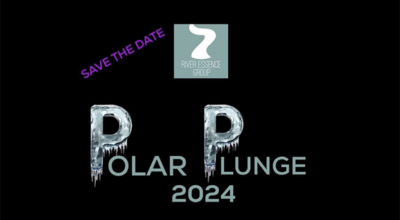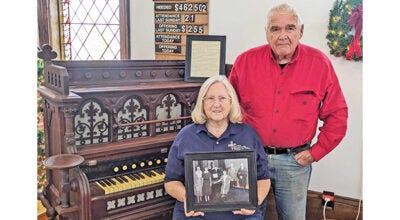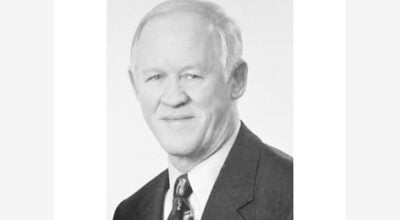Artist serving up ‘icons’ at Frankie’s Breakfast Club
Published 9:27 am Thursday, March 20, 2014

Sculptor Brad Bigford’s series of relief-style portraits, similar to this one of Frankie Rios, will be on display at Frankie’s Breakfast Club for several weeks this spring. (Leader photo/JILL McCAUGHAN)
BENTON HARBOR—When patrons enter Frankie’s Breakfast Club, they can’t help but notice a striking, somewhat abstract, and yet very realistic, portrait of Frankie Rios, the restaurant’s namesake. Upon closer examination, viewers will see that the piece is actually a relief, composed of various layers of painted wood.
Soon, the restaurant will be filled with more portraits done in this same, unique style. The artist, Brad Bigford, will be showing a collection of his recent work, “Icons,” with the opening reception scheduled for March 23 from 4 to 7 p.m. Hors d’oeuvres and beverages will be served.
Earlier this week, I had the opportunity to talk with Brad over breakfast at Frankie’s. Here are some excerpts from our conversation.
BB: The show includes portraits of famous people. We’ve got Madonna, Michael Jordan, Michael Jackson, Muhammad Ali, Jack Nicolson, Tiger Woods to name a few.
OTW: You’ve brought along reproductions of a piece by Botticelli and by Duchamp. Is this something new you’re doing now? Or are these pieces that will also be in the show?
BB: These are something new—reproductions of famous pieces of art. I’ll be doing a show with them later.
My crossover piece was Frieda Kahlo. I did her in my old style, which is not even brushed. It’s like panels with crackle paint, stenciled and maybe a little bit of hand brushing. When I did Frieda Kahlo, I chose her famous painting of herself instead of a picture of her, and that was kind of my cross-over piece to doing other people’s paintings. And it worked in that same style, but I hadn’t done a painting before.
So, the next painting I chose was a Salvador Dali, and I did all the sections, and I put it together, and it didn’t look like anything. So, I thought, “Well, if I just paint this section out here to delineate it, it might work.” And it looked better, but then I painted the next section, and I ended up painting the whole thing. So, I just kind of switched gears and decided, “Well, for these, I’m just going to have to actually paint, not just screw around.”
OTW: Would you say that portraiture is easier to do in this medium that you’re using?
BB: Yes, in a certain size. When you’re starting to get to a smaller size, you’re starting to lose some of the quality that I like about it.
OTW: In the past, you were working in a style that was more sculptural, creating three-dimensional pieces. Would you call these newer pieces 3D still or is this 2D, or what would you call it?
BB: It’s almost like a relief. It is a relief of sorts. It’s just a more linear relief. It’s not carved in between the layers, so it’s more of a stacked relief.
OTW: How did you first go from your former style of work to this new form you’re using?
BB: I was watching an old black and white horror movie on TV, and there was this woman screaming, and the lighting was real under-lit, so you just saw a real vivid black and white image. So, I took a picture of the TV screen, and I went out in the shop, and I just cut that white part out in ¾-inch thick wood and rounded it over and stained it white and put it on a black background, and it looked really cool.
That was the first one. Then I got thinking, let’s make this work with color, so I started experimenting with more panels, raising up the pieces to create depth.
Then, like with the eyes, those pieces are missing because that’s the black, that’s the darkest part of every picture, that’s just gone, so I’ll put the pinprick of light in with a little tiny dowel, and I’ll set it in past the hole, so you have the ‘follow eyes.’ So, almost all of the eyes on the paintings, when you come down to the show, the eyes will follow you when you walk across the room.
OTW: How interesting. Creepy!
BB: Yeah, creepy!
OTW: What I’m hearing is that you sort of devised this medium that you’re working in.
BB: Yes, this is my own thing, as far as I know. Of course, it’s a big world.
OTW: And, it’s still evolving, it sounds like.
BB: Yes. It reminds me of something that I saw in Mexico a few years ago. There were all these guys running around doing these quick pictures with spray paint and stencils to create art for people on the spot.
And that’s sort of what I’m doing. I’m just kind of stenciling on plywood and cutting it out. I’ve taken it to a little bit higher level, but it’s similar.
OTW: So, you take a picture of the piece of are that you’re going to reproduce, and then…
BB: Or, I acquire a picture. I’ve probably done about 15 commissions for people, their kids, them and their dog, or whatever. I always require at least three photos because some won’t work. You need the right kind of light, the right kind of contrast. If it’s a really low-contrast picture, I just won’t have a lot to work with. Or, I’ll just take the photo myself because I know what I need.
OTW: How did you get involved with the folks at Frankie’s Breakfast Club?
BB: I just came in here, and I liked the food. And, I took a picture of Frankie and made that portrait for them. I like to help small businesses and the movement in Benton Harbor. I’ve lived here for years, and it was strugglesome to live here, and a lot of things have changed. Things are very slowly getting better.
While Bigford’s pieces will be on display at Frankie’s through April 23, permanent pieces of his sculptural work can also be viewed at the Lake Michigan College Campus of Western Michigan University, Lakeland Hospital in St. Joseph and Fernwood Botanical Garden.
He also has plans for an upcoming show that will include versions of famous artwork composed in the same unique relief style as his portraits. Those who are interested in commission pieces can reach Brad at (269) 369-9346.





